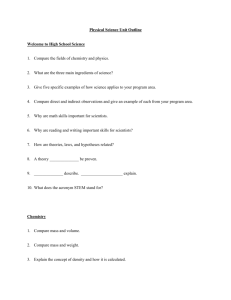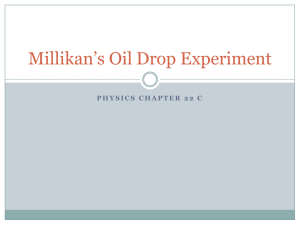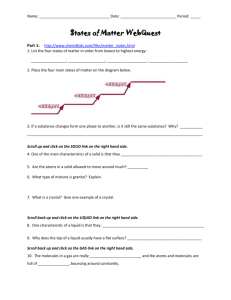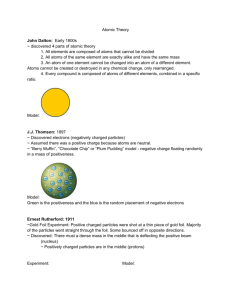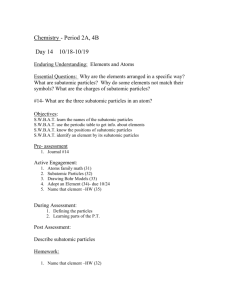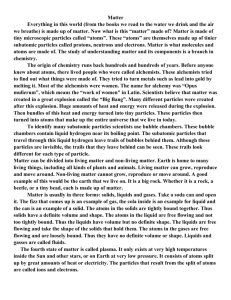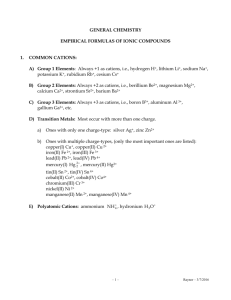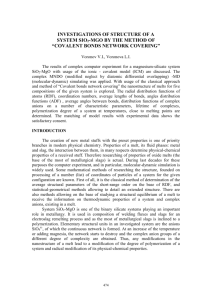Guided Reader
advertisement
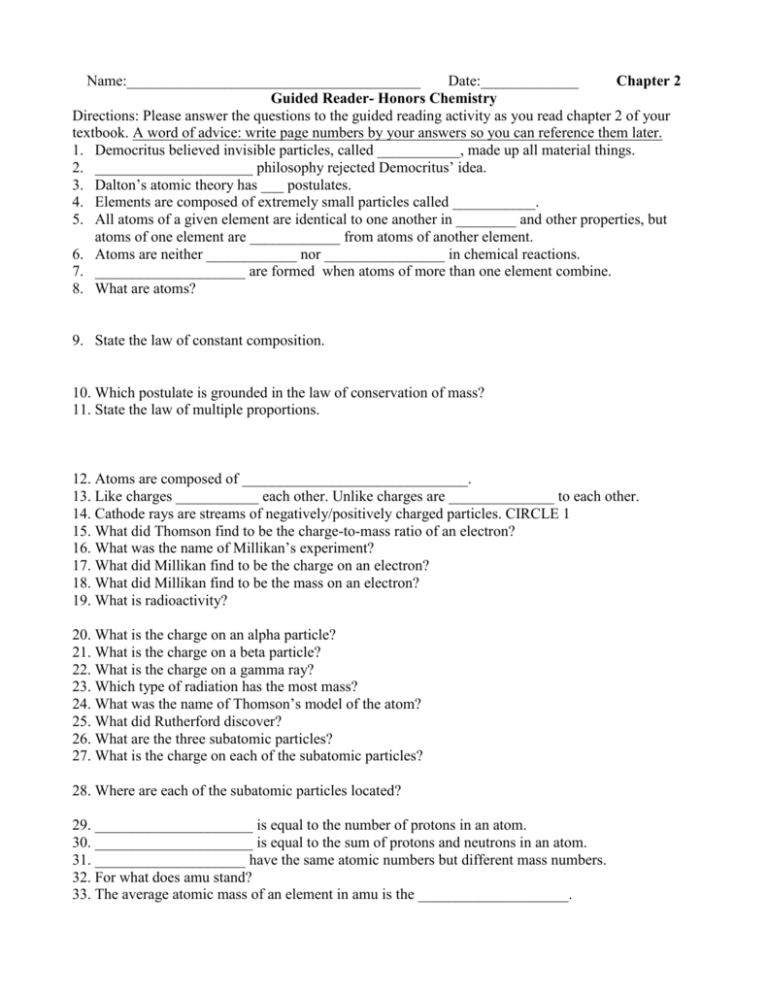
Name:_______________________________________ Date:_____________ Chapter 2 Guided Reader- Honors Chemistry Directions: Please answer the questions to the guided reading activity as you read chapter 2 of your textbook. A word of advice: write page numbers by your answers so you can reference them later. 1. Democritus believed invisible particles, called ___________, made up all material things. 2. _____________________ philosophy rejected Democritus’ idea. 3. Dalton’s atomic theory has ___ postulates. 4. Elements are composed of extremely small particles called ___________. 5. All atoms of a given element are identical to one another in ________ and other properties, but atoms of one element are ____________ from atoms of another element. 6. Atoms are neither ____________ nor ________________ in chemical reactions. 7. ____________________ are formed when atoms of more than one element combine. 8. What are atoms? 9. State the law of constant composition. 10. Which postulate is grounded in the law of conservation of mass? 11. State the law of multiple proportions. 12. Atoms are composed of ______________________________. 13. Like charges ___________ each other. Unlike charges are ______________ to each other. 14. Cathode rays are streams of negatively/positively charged particles. CIRCLE 1 15. What did Thomson find to be the charge-to-mass ratio of an electron? 16. What was the name of Millikan’s experiment? 17. What did Millikan find to be the charge on an electron? 18. What did Millikan find to be the mass on an electron? 19. What is radioactivity? 20. What is the charge on an alpha particle? 21. What is the charge on a beta particle? 22. What is the charge on a gamma ray? 23. Which type of radiation has the most mass? 24. What was the name of Thomson’s model of the atom? 25. What did Rutherford discover? 26. What are the three subatomic particles? 27. What is the charge on each of the subatomic particles? 28. Where are each of the subatomic particles located? 29. _____________________ is equal to the number of protons in an atom. 30. _____________________ is equal to the sum of protons and neutrons in an atom. 31. ____________________ have the same atomic numbers but different mass numbers. 32. For what does amu stand? 33. The average atomic mass of an element in amu is the ____________________. 34. The average atomic mass is found by multiplying the _____________________ of each ______________________ by its ____________________ and summing these products. 35. _______________________ is the most important tool chemists use for organizing and remembering chemical facts. 36. Rows on the periodic table are called ____________________. 37. Columns on the periodic table are called ___________________. 38. Elements on the left side of the table are ___________ except for hydrogen. 39. Elements on the right side of the table are _________________ and are separated by the ____________________. 40. Two or more atoms tightly bound together are ________________. 41. What is a diatomic molecule? 42. Compounds composed of molecules are called ______________________. 43. Most molecular substances contain __________________. 44. What is the difference between molecular and empirical formulas? 45. What is the empirical formula of C2H6? 46. __________________ formulas give more information than molecular formulas. 47. A positively charged ion is a _____________. 48. A negatively charged ion is an ___________. 49. What is the charge on group 1A metals? 50. What is the charge on group 2A metals? 51. What is the charge on group 3A metals? 52. What is the charge on group 5A nonmetals? 53. What is the charge on group 6A nonmetals? 54. What is the charge on group 7A nonmetals? 55. Ionic compounds are usually a combination of a _____________ and a _____________________. 56. If a metal can form more than one charge, then _______________________ in parentheses are used. 57. What is the ending of a polyatomic cation? 58. Monatomic anions end in _______. 59. Oxyanions end in _______ or _________. 60. The _______ ending polyatomic ions have one more oxygen than the _________ ending polyatomic ions. 61. What two prefixes are used for four member oxyanions? 62. What is the rule for acids containing anions whose names end in –ide? 63. What is the rule for acids containing anions whose names end in –ate or –ite? 64. What is the prefix for 4? 65. What is the prefix for 6? 66. What is the prefix for 8? 67. The prefix ___________ is never used with the first element in a molecular compound.
